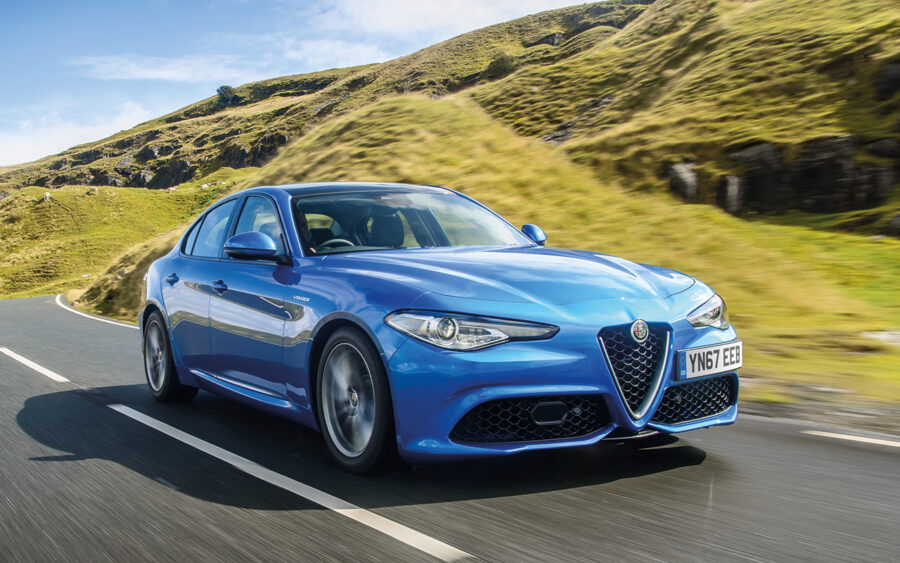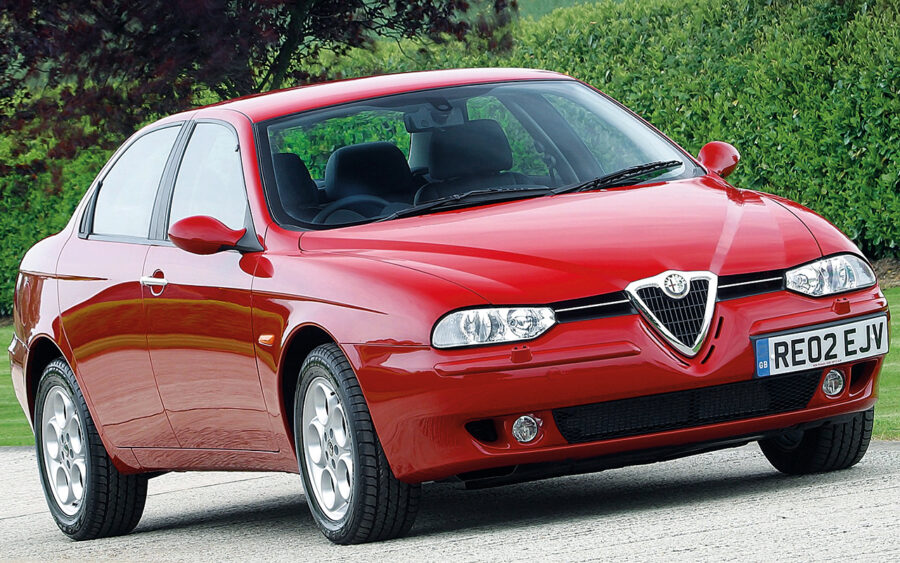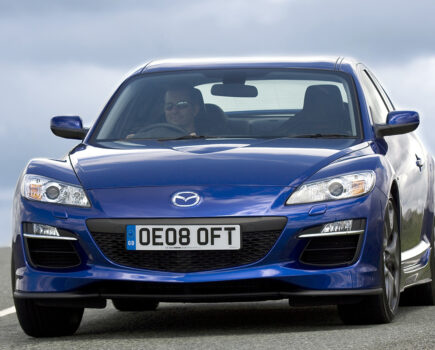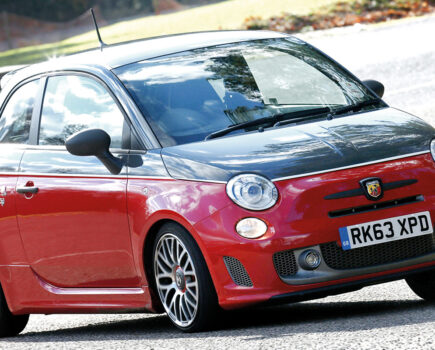Alfa Romeo enjoyed something of a rebirth at the dawn of the new millennium. Here are the cars that have helped rebuild its image
Words: Paul Wager
It seems you’re never far away from an old episode of Top Gear and while waiting in a tyre bay recently I found myself watching a youthful pre-agricultural Clarkson smoking round a track in the Alfa 156, marvelling at the fun offered by even the basic 1.6 Twin Spark.
This, it was reckoned, would be the start of a new era for Alfa Romeo and to be fair the 156 looked superb, was decently made (certainly by Fiat Group standards) and offered a driving experience sufficient to tempt keen drivers out of their BMWs.
Did it transform Alfa? Its image, yes – but its sales figures… sadly, no. Sure, it sold better than any previous Alfa saloon had fared in the UK, but a patchy dealer network offering a distinctly 1970s flavour of service meant the brand would remain a niche option. A steeper depreciation curve meant the lease companies priced it up alongside more costly cars from rivals which didn’t help, but the 156 did at least raise Alfa’s game sufficiently for the brand to remain in the UK.
The 156 would later be joined by the smaller 147 hatch, then replaced by the even sharper-looking 159 while the spirit of the Alfasud was revived by the MiTo, but the real surprise was the Giulietta which offered a genuinely credible alternative to VW’s all-conquering Golf… if only British buyers had realised it.
Meanwhile the sporting side of the range was bolstered by the GT alongside the Brera and its Spider derivative, while the successor to the 159 was the current Giulia.
Naturally none of them managed to set the fleet world on fire and the buying public remained sceptical of build quality despite massive strides in this area, meaning values tumbled far faster than the Bavarian competitors. This was a shame for Alfa as a brand but is good news for the thinking buyer today.
So if you really don’t want to run with the herd, we’ve unravelled the 21st century Alfa line-up for you.
Alfa Romeo 156 (1996–2007)
The 156 platform was shared with the firm’s 147 and GT as well as the Europe-only Lancia Lybra, and it was Walter da Silva’s elegant style which set it apart on the road, with elegant curves which made BMW look dowdy and Ford just clumsy.
For once Alfa went with an entirely conventional drivetrain: a range of market-friendly petrol and diesel engines ranging from the 1.6-litre four-pot to the 2.5-litre V6, with even the basic 1.6 knocking out a handy 118 bhp while the 2.5-litre V6 was good for 189 bhp and the 3.2-litre GTA with 247 bhp gave the M3 a run for its money. Despite being front-drive, the 156 was an entertaining handler and offered a style the sombre Audi and BMW just couldn’t match. Perhaps most surprisingly of all, build quality was pretty good and the 156 was easy to live with even if the dealers didn’t quite measure up to the German brand experience.
Facelifted by Giugiaro in 2003, the 156 was replaced by the 159 in 2005. The Sportwagon estate makes an intriguing choice and with the 2.4-litre five-pot diesel sounds like an angry Quattro. Trim and body parts can be tricky to source but Alfa specialists should be able to handle all the mechanical parts.
Shabby projects for less than £1000, presentable 1.8/2.0 cars from £3000 and nice V6s from £4000. The GTA is a different ballgame: your minimum is £10,000, rising to £25,000 and more.

Alfa Romeo 159 (2004–2011)
“At last, a great reason not to buy German,” trumpeted the front cover of Autocar in June 2005 and on the face of it there was little room to argue with that sentiment.
The 159 was built on a platform developed in conjunction with GM, the intention being to use it under Saab, Buick, Cadillac and Vauxhall/Opel models as well as Fiat’s own Fiat, Lancia and Alfa brands. When the joint venture was terminated in 2005, the only product to use the result was the 159 but it gave Alfa a leg up into the state of the art. Styled by ItalDesign and half a size larger than its predecessor, the 159 had a real presence on the road and a bodyshell offering torsional rigidity far greater than the older car.
The 159 broke with tradition in one other important area, too: it was the first to dispense with the old Fiat-based Twin Spark four-cylinder engine which could trace its lineage back to the Alfa 155 and also the long-serving Alfa Romeo ‘Busso’ V6 which had first appeared in the Alfa 6 at the end of the 1970s.
Instead, the 159 used a range of GM-derived engines – another surviving part of the ill-fated joint venture. Badged JTS, the petrol units all featured direct injection and variable cam timing, spanning the 160bhp 1.9-litre, the 185bhp 2.2-litre and a 3.2-litre V6 good for 260bhp.
The JTDM diesels meanwhile were Alfa’s own: the five-pot, 20-valve 2.4-litre offering 200bhp and the 1.9-litre four-cylinder in either eight-valve, 120bhp form or 16-valve, 150bhp tune.
The 2006 Geneva show saw the Sportwagon estate unveiled, with the car facelifted in 2008, gaining aluminium suspension componentry to reduce weight by 45kg. The following year a new 170bhp JTDM diesel was added and a 1742cc turbo petrol engine was introduced under the ‘1750 TBi’ badge and offering 197bhp, replacing the older GM-derived JTS units.
The 159 was predominantly front-driven but the Q4 all-wheel drive option was offered on the 3.2 V6 and the 2.4 diesel, although only the petrol Q4 was offered in the UK.
The 159 would disappear from UK price lists in July 2011, leaving Alfa with a two-model range of MiTo and Giulietta until the present-day Giulia appeared in 2015.
Just £2500 buys you a presentable 159 from the mid-2000s, the majority of them diesels showing modest miles for their age – think 115,000–120,000. Lower mileage commands more money up to the £4000 mark but there’s a jump to the facelift cars, especially the late-model 1750 TBi which can command £7000 in the right spec, with the V6 around £1000 more.
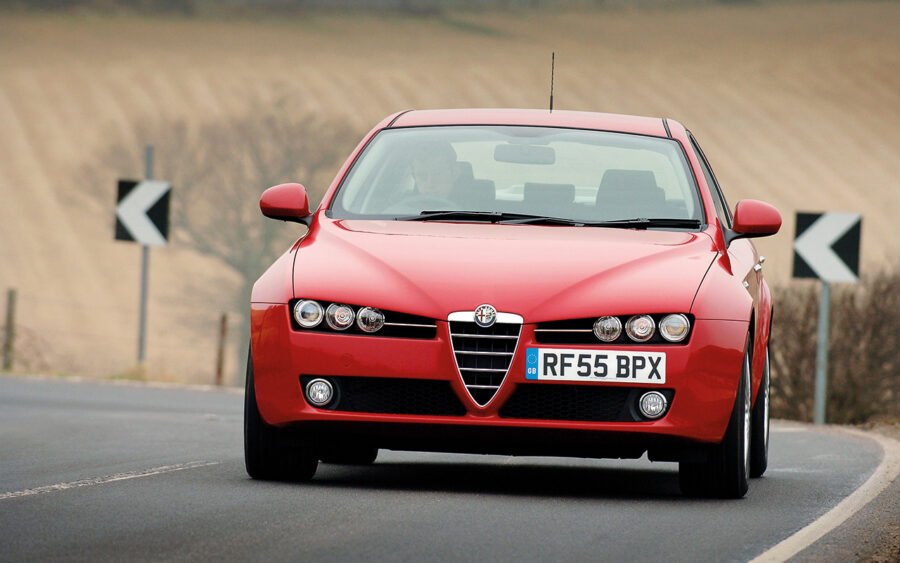
Alfa Romeo 147 (2000–2010)
Alfa’s answer to the Golf, the 147 was basically a hatchback version of the 156 saloon and shared that car’s running gear, including the option of a 3.2-litre GTA model which took the fight to the Golf R32 in a haze of Pirelli smoke.
Offered in three and five-door form, the 147 was a steady seller for Alfa and today makes an intriguing alternative to a Golf or Focus.
Under £1000 for mid-range models showing their age, with nicer 1.8 and 2-litre cars at around £3000 and then a big jump to £10,000 for the GTA. Avoid the many cheap but broken Selespeed cars with the automated manual box.
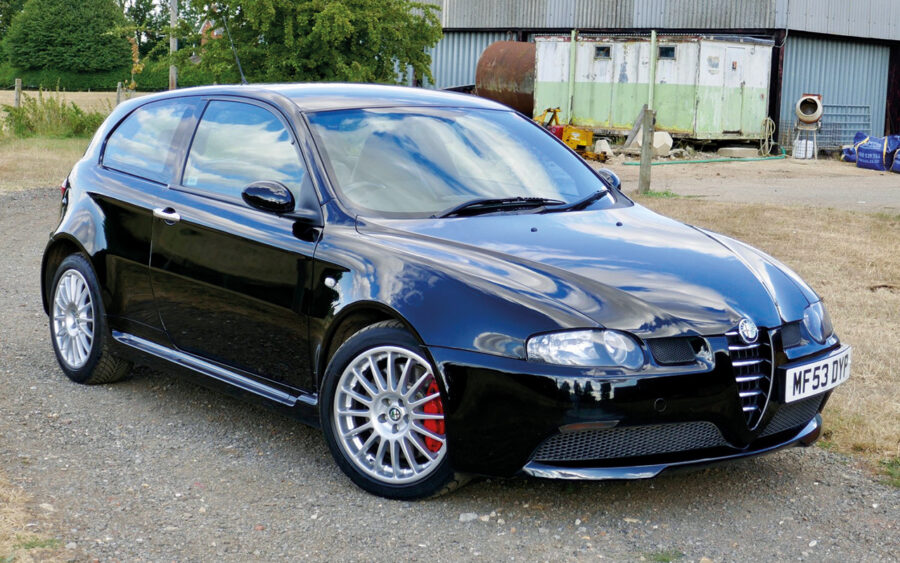
Alfa Romeo MiTo (2008–2018)
Trumpeted by the press at the time as “Alfa’s MINI” the MiTo (its name derived from Milano and Torino) rediscovered the flavour of the Alfasud.
Based on the platform of the Fiat Punto Abarth, the MiTo was longer and lower than the Fiat, with distinctive if rather curiously hamster-like styling.
Launched in 2008, the MiTo was offered in the UK with 90bhp 1.3-litre or 118bhp 1.6-litre JTDm diesel options, alongside a 1.4-litre petrol in 95bhp or turbocharged ‘T-Jet’ spec rated at 120 or 153bhp
The MiTo was facelifted in 2014 and again in 2016 when the UK range gained the intriguing twin-cylinder 900cc Twinair petrol engine rated at a buzzy 103bhp, the 1.4-litre petrol unit now offered in regular 78bhp flavour or in MultiAir form at 140bhp or 170bhp. The diesel option was now limited to the 1.3-litre, 93bhp JTDm and the MiTo would disappear from UK showrooms in early 2019.
Just £1300 gets you into a miley MiTo, with £500 more dipping below the 100,000-mile barrier. Prices rise with condition and mileage, with plenty of choice at the £3000–5000 mark. Late model examples in range-topping 170bhp Veloce trim can command up to £13,000.
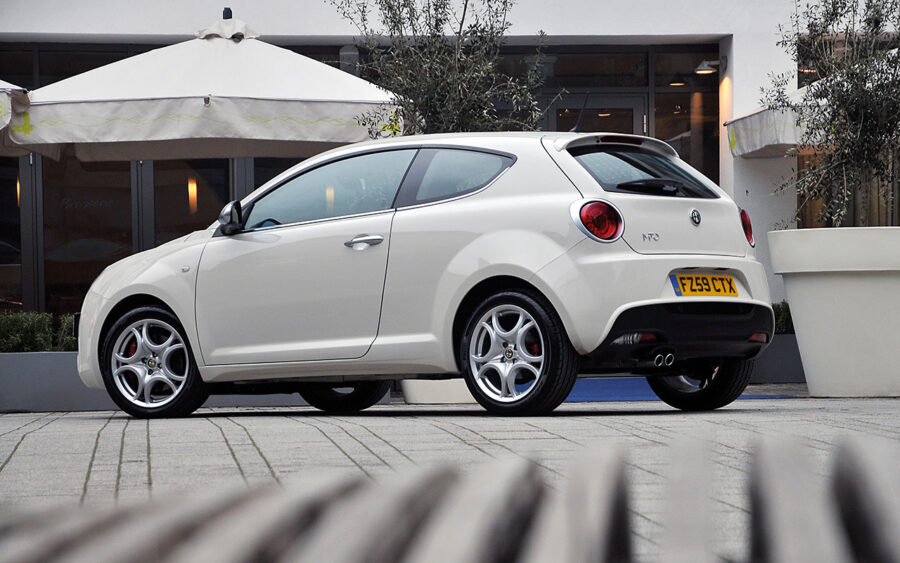
Alfa Romeo Giulietta (2010–2020)
“New Alfa beats Focus,” reckoned the Autocar road testers in 2010, with a group test verdict asking whether the Giulietta could beat the mighty Golf, too.
Yes, the Giulietta really was that strong a contender and was in a different league from even cars of the 156 era.
Developed in the Fiat-Chrysler era, the Giulietta was the first Fiat Group product to use the company’s all-new Compact platform, derivatives of which would later appear under vehicles as diverse as the Chrysler Voyager and Jeep Cherokee. A modern design majoring on torsional strength and weight saving, it used a transverse engine layout with MacPherson strut front and independent rear suspension and offered the option of both front and all-wheel drive.
The result was a weight saving of around 20kg over the car it effectively replaced, the 147, yet being longer and wider it tipped the scales at about 100kg heavier than the equivalent Golf.
With more conventional styling than the MiTo, the Giulietta was refreshingly sensible but still offered a dose of style in the Golf class. The Giulietta was formally launched here in June 2010, in three flavours: the basic Turismo, the comfort-orientated Lusso and performance Veloce with bigger wheels and firmer suspension.
Four engines were offered, the petrols based on the 1.4-litre MultiAir unit available in 118bhp and 168bhp form while a 1.6-litre JTDm turbodiesel offered 104bhp and a 2-litre 168bhp.
A six-speed manual was standard, with Alfa also fitting its ‘DNA’ system which offered two different driving modes plus a winter setting accessed via a console switch. This altered steering feel, throttle pedal mapping and on cars with the Q2 electronic differential the locking characteristics.Shortly after launch the Alfa fans’ prayers were answered with the unveiling of the Cloverleaf model, complete with the direct-injected 1750TBi turbo engine which boasted 235bhp and scrabbled to 60mph in just 6.8 seconds before topping out at 150mph. Priced at £25,000 it was pitched right at the identically priced Golf GTI which in Mk6 form boasted 210bhp and shows you everything about Alfa UK’s confidence in the Giulietta.
The Giulietta was facelifted in 2014, gaining a restyled grille and different seats among other details, while a 2-litre 148bhp diesel option was added to the range. In the UK market, the trim levels were altered to become the confusingly named Distinctive, Progression, Exclusive and Sportiva.
A further rejig for 2016 saw the car revised under the name New Giulietta with a restyled front end resembling the Giulia and the trim levels changed to the slightly less awkward Super, Speciale, Tecnica and Veloce.
The Veloce and 1.6 diesel were also offered with the new twin-clutch TCT gearbox previously only offered with the 1.4 petrol and 2-litre diesel. For 2019, engines were updated to Euro 6 spec, but production would end in December 2020, after a total of 469,067 had been produced. The corporate turmoil which would eventually produce Stellantis meant the car was never replaced.
Entry ticket for a presentable Giulietta is just £3000 for which you’ll get a miley 2-litre diesel, while the 1750 starts at around £7000 for a 2011 example. Facelift cars command stronger money, with the 1.4 petrols starting at £8500 and the diesels starting around the £9000 mark for 50,000–mile cars.

Alfa Romeo GT (2003–2010)
Early scoop shots of the GT saw it heralded as the first of an all-new generation offering M3-style performance and Ferrari-derived engines but in reality it was a hangover from the 147/156 era.
Overlapping both the ‘916’ GTV and the much more modern Brera, the GT was something of a curiosity in the Alfa range. Essentially a two-door coupe on the 147/156 platform, but offering a full four seats in the mould of BMW’s 3-Series coupes, it also offered a hatchback rear which Munich couldn’t supply.
Bertone’s design was a neat piece of work even if the car’s saloon origins were rather obvious, sharing the bonnet and front wings with the 147. Launched in 2003, the GT was offered in the UK with just three engines: the 165bhp 2.0 JTS petrol, the 240bhp 3.2-litre ‘Busso’ V6 and the 150bhp 1.9 JTD diesel. The 138bhp 1.8 Twin Spark was added later but the car would be discontinued in June 2010.
The GT is something of a rarity in the UK and values remain strong. You’re looking at just under £4000 for the 2-litre petrol and £5000 for a 1.9JTD, jumping to £7000 for the 3.2 V6.

Alfa Romeo Brera/Spider (2005–2010)
The Brera may have looked confusingly similar at first glance to the GT but was in fact a very different prospect and a much more modern design. Where the GT was based on the 156 platform, the Brera – and its open two-seater Spider sibling launched in 2006 – used the ‘Premium’ underpinnings of the 159.
As such it was in essence a two-door coupe version of the 159 which was no bad thing at all. The UK range was refreshingly simple: the 182bhp 2.2-litre JTS four-cylinder, the 256bhp 3.2-litre V6 in front-drive and all-wheel drive Q4 forms and the 2.4-litre JTDm five-cylinder diesel rated at 207bhp. The car was updated in 2009 alongside the 159, gaining the new 197bhp 1750TBi engine.
A curiosity for the UK market was the 500-off Prodrive-developed Brera S produced in 2008 which majored on uprated Eibach/Bilstein suspenion designed to address criticism of the standard car’s wooden handling. Production of the Brera and Spider ended in 2010, but like the Giulietta it was destined not to be replaced.
The entry ticket is just under £4000 with the market split between the diesel and four-pot petrol models. The V6 cars start at around £7000 in Q4 form with prices rising with condition and mileage to the £10,000–12,000 mark, all of these the nicest V6s.
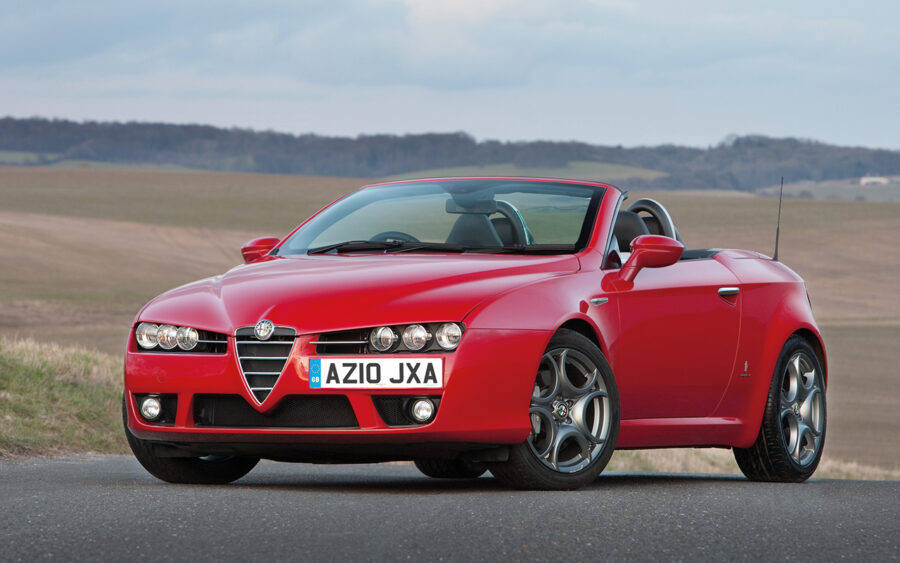
Alfa Romeo Giulia (2015–)
Today’s Alfa Romeo is a far cry from the optimistic maker which launched the 159 and Brera. A small fish in the massive Stellantis pond, it faces an uncertain future and currently offers a three-model range of which only one is a saloon car: the Tonale compact SUV, the full-size Stelvio SUV and the Giulia which is yet another of those world-class cars which is destined never to fulfil its full sales potential.
Which is a shame since the Giulia builds on the success of the 159 and offers a really credible BMW alternative, especially in lairy Quadrifoglio trim with its Ferrari-developed 503bhp twin-turbo V6. Other options include the 2.2-litre diesel in both front and Q4 all-wheel drive at 187 or Q4 only at 207bhp, plus the 2.2-litre petrol in 197bhp or 276bhp form.
Like an Italian Jaguar XE, the Giulia’s future looks uncertain in the long term as its parent company tries to reinvent the brand for a new EV age.
